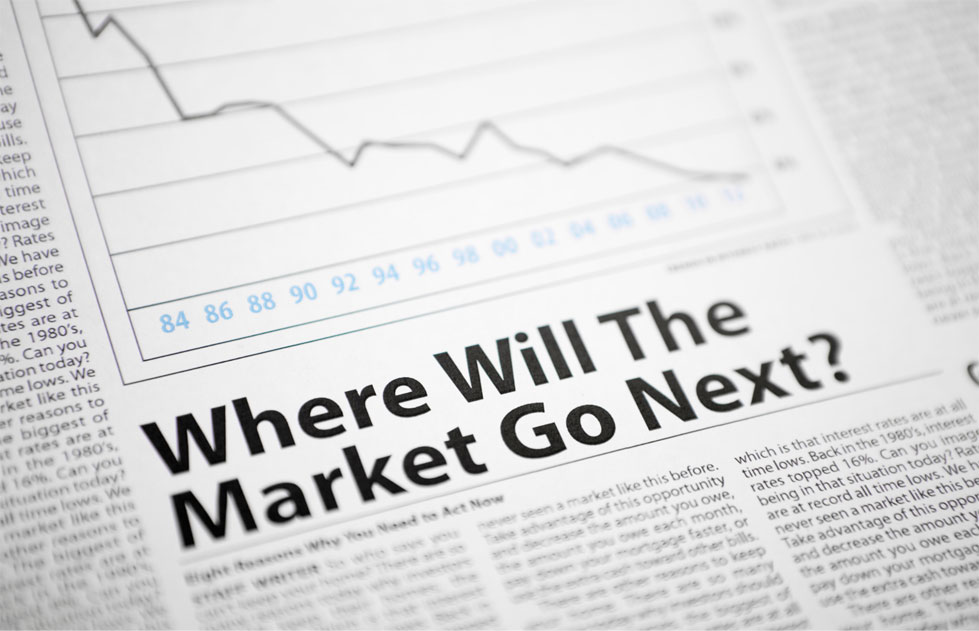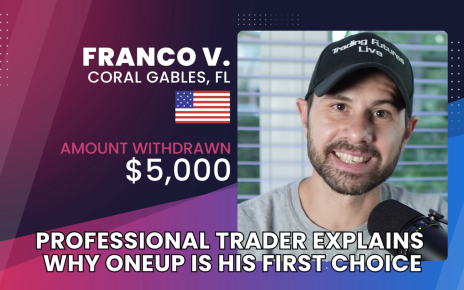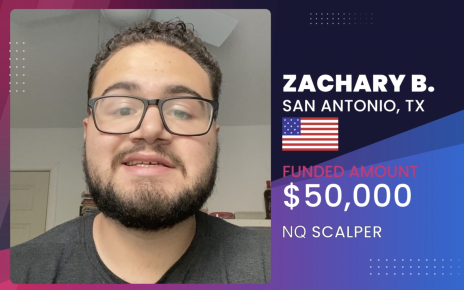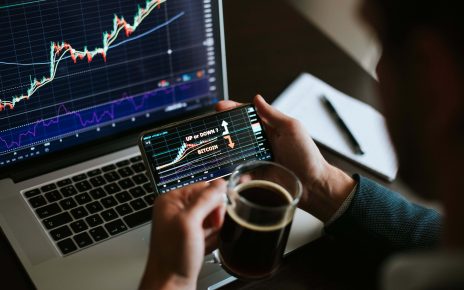Trading could be an exciting career, however, it comes with high risks. It is not easy to succeed, but not impossible. Knowing what trading is and how to navigate all the information you should deal with after opening a brokerage account is essential.
Someone who wants to be a trader has more available tools day after day so that he or she can overcome difficulties and succeed in the financial markets. It includes several and variable topics such as how to open a trading account, how to read the information in charts, when buying and selling assets at the right time or what timeframe is good for you, long or short term.
Let’s talk about what you should know when navigating the financial markets and take advantage of your savings, experience and knowledge.
People don’t have to be on the New York Stock Exchange floor to become successful investors, you can do futures, forex, or stock trading among others with an online brokerage account. And your journey starts here.
What is trading in simple words?
A trader buys and sells financial assets like bonds, stocks, currencies, and commodities, to name the most liquid. What are the reasons a trader would like to trade? It could be for speculation (speculator), it could be part of his or her job at a stockbroker firm (agent), or it could be for risk protection (hedger).
If you are here it is because you want to buy and sell financial instruments in order to get a profit resulting from the difference between the price you bought the assets and the price you sold them. How much money, what account, how many times a day, what markets, what strategy, will define the kind of trader you are.
Volatility: What makes it all possible?
How does a trader make money? By making profitable trades. The goal is to make money, to increase your capital. Independent traders participate in the markets looking for opportunities and profitable trade set-ups.
A profitable trader is the one that wins. Sounds obvious, but to be profitable you don’t need to close all your trades in positive, you can even lose most of your bets and win only a few, and still, make a living. What matters is how much you make when you win and how much you lose when the trades go bad.
Opportunities arise because the price fluctuates. Prices swing and trend. But they can also be volatile. When prices move fast, you can make a gain in a short period. These speed variations of trading prices are measured by volatility. The more volatility, the more prices will move in a specific amount of time.
VIX – The Chicago Board Options Exchange’s CBOE Volatility Index

When you read about volatility in the news, it is usually because it has been a session with significant price moves, most likely big declines in main stocks indices. Some indicators measure volatility in certain financial instruments.
The most popular is the VIX. Also known as the Cboe Volatility Index, the VIX is an indicator for expected volatility. When volatility soars, you can see sharp swings in prices, creating opportunities for big and quick wins and also increasing the risk of substantial losses. Some volatility is good, too much is very risky.
In case you want to check historical volatility levels, you can go with technical indicators such as the average trie ranges or standard deviations.
It is even recommended to avoid making large bets during episodes of extreme volatility. The more experience you gain, the more you will learn about how to use price swings in your favor.
Ok, I want to trade: What to do now? – How to start trading?
The best thing to do is to get to know what financial instruments you like the most. Do you like futures contracts or stock trading? So, explore your options.
Downloading a trading platform and opening a demo account is a must-do first. You will see a new world. Start practicing, making demo trades, learn about limit, stop-losses, trailing stop, and how platforms work.
Once you have an idea of what is to be a trader in financial markets, it is recommended to increase the time you spend studying: concepts, markets, strategies. Learn from the history of other traders. Practice. Make a test of your possible trading strategy. Keep a trading journal.
Once you are becoming profitable at your demo account, maybe it is time to try trading with real money.
Need funds for trading? Read about the most popular funded trading accounts!
What kind of assets can you trade?
Electronic trading platforms offer a wide range of assets to trade. The most relevant are currencies (trading is in pairs, like EUR/USD), stocks, commodities (for example gold -XAU/USD-, silver -XAG/USD), indices (like FTSE 100 and Dow Jones) and more recently cryptocurrencies.
The most popular is the forex market (FX): a global decentralized market to trade currencies. It is the largest and most liquid in the world. That means lower spreads (the difference between the buy and sell prices) compared to other markets. Leveraged provided by brokers opens the door to opportunities in the foreign exchange, futures and commodities markets even when prices move less than in other markets. When trading, you will need capital to maintain margin requirements. Investing in currencies usually requires less margin than, for example, options or stock trading.
Types of trading: More than just to buy and sell assets
There are different types of trading, depending not only on what you trade but also on when and how. It is not the same to make a few trades a week than making many trades every day. Is not the same to use only technical analysis than to trade on fundamentals.
In the past, only those working for financial institutions and brokerages could trade actively in markets. Over time things have changed dramatically. The internet and retail trading companies opened the doors to all individuals who want to trade actively.
Today, you can even trade a decent amount of money with no capital. Funded trading is now a popular option for people who have the knowledge to invest in the financial market, but don’t have enough capital.
Those who trade actively, make a lot of trades a day, selling and buying the same asset several times, the so-called day trading. This kind of trader uses intraday trading strategies, containing different techniques in order to profit from short-term price fluctuations.
Day trading is often opposed to long-term investing. A long-term trader makes a few trades a month. Those positions remain open for months or years. If you want to buy and sell quickly, you are more like an intraday trader. Instead, if you want to buy and hold based on your analysis, you want to play the long run.
Both day- and long-term trading can be profitable. It requires different abilities. Probably the biggest difference is that day trading is done every day, it needs ongoing vigilance. The long-term approach is far more passive, in dedication, and also on income generation. Day trading is riskier, while at the same moment, offers the possibility of making larger profits.
Technical vs Fundamental Analysis: both or neither?

Some traders use technical analysis by forecasting price action based on the study of past price behavior, market data, volume and different technical indicators. They look at data and analyze charts. The key is to find price levels to get into the market and also targets.
Fundamental analysis is the analysis of the health of a company, a currency, a country and its competitors. It studies a company’s financial statements, economic indicators, interest rates, and credit risk, among others. The idea is to determine assets that are overvalued and profit from that. Determining the intrinsic value of an asset is the most used definition of what fundamental analysis does.
In simple words, a technical trader would look to the chart and a fundamental trader to economic numbers. As a trader, you can combine both. If your fundamental analysis suggests a stock is overvalued, instead of just clicking sell, you can come up to technical analysis to find better price levels to sell the asset. If your analysis suggests buying, you can look in an economic calendar when the next event could affect the asset and consider that for the final decision on when and at what level to buy.
Read about What funded trading is, and how to become funded
There is also another way to trade: algorithmic trading. It is also referred to as automatic trading. A trading robot executes the orders with programmed instructions. The parameters for the robot can come from technicals. For example, you have tested that in GBP/USD, when the price hits the 10-day moving average, it rebounds 20 pips most of the time. You can set parameters so that the algorithmic trading system identifies that situation correctly and executes the order.
The robot parameters can be obtained from diverse and multiple sources, from technical to complex algorithms used in high-frequency trading (programs able to perform a large number of trades in fractions of a second). The role of the trader here is to monitor the robot and set the parameters.
What are brokers, the stock market, and exchanges
You probably open a demo account to try and practice. A broker provides the demo account, the trading platform to trade, and charges a commission for their service. It also offers assets and buying and selling prices. Simplifying, exchanges offer price references to the brokers.
Most individuals can’t trade directly on the exchanges like the Nasdaq Stock Market, they execute trades through a broker, the provider of the electronic trading platform. Regulations across countries differ on what a broker can and can’t do. There are also over-the-counter (OTC) marketplaces where trades are between two parties without a central exchange or broker.
Opening a demo is not the same as a real account. Is not only about the difference between real and fake funds, this time you should consider researching for a broker to see the best, less expensive and reliable way to fund and to withdraw capital from your account.
Futures, commodities, or stock trading; train yourself
One step you could take is to sign into a free trading signals service in order to get familiarized with trading platforms and how to set up a trade. At the same time, you will learn about targets, and also you will be gaining experience.
Books, trading signals, trading strategies… can tell you a lot, but not all. Experience is another key factor. The other critical player is your psychology. Successful trading requires controlling your emotions, being disciplined.
You can read many books, test the best strategies, and talk with the best traders; that won’t guarantee success. Psychology and self-control are as much as important. Trading a funded account that is not your money, with daily loss limits and controls, could be extremely helpful.
From a trader to a successful investor
One thing is to trade, and a completely different one is to be a successful trader. OneUp Trader can help you in your career, not only becoming a profitable investor but also in building and projecting yourself into the future and gaining money.
Investing your own money could be the beginning. Later, if you want to become a trader, you will need funding.
You can use your money, or if you are afraid to lose it all or don’t have it, OneUp Trader can help you in your career by giving you access to funded traded accounts and becoming a professional trader. Trading knowing that someone is looking for you, will for sure, help you avoid many mistakes traders commonly make.
It is not just that you want to become part of buyers and sellers’ teams or to be a wall street guy or girl, but to manage your personal finance and then try it and decide within trading works or that the market doesn’t work for you.





